Abstract
A method is described for measuring the rate constants of both synthesis and degradation of nucleic acids in sterile growing cultures of Lemna minor which avoids the difficulties of environmental changes in isotope uptake and precursor pool size. In fast growing cultures the half-life of ribosomal RNA has been estimated to be between 5 and 8 days.
This half-life has been shown to consist of two components, cytoplasmic ribosomal RNA with a half-life of about 4 days and chloroplast ribosomal RNA with a half-life of about 15 days. The possible interference of recycling has been checked, and the evidence indicates its likely insignificance. “Heavy” labeling of Lemna with D2O and 15NO−3 has provided evidence for the conservation of ribosomal RNA in fast growing cultures and has also provided an alternative assessment of recycling. When Lemna is placed on water, the rate of degradation of ribosomal RNA is increased and that of synthesis is decreased. Under partial “step down” conditions it has been found that omission of either nitrate or phosphate, or calcium or magnesium leads to an increase in the rate of degradation of ribosomal RNA. In Lemna grown on water, benzyladenine increases both the synthetic and degradative rates of nucleic acid metabolism. Abscisic acid, on the other hand, markedly reduces the rate of synthesis of ribosomal RNA but leaves the degradative rate unaltered.
Full text
PDF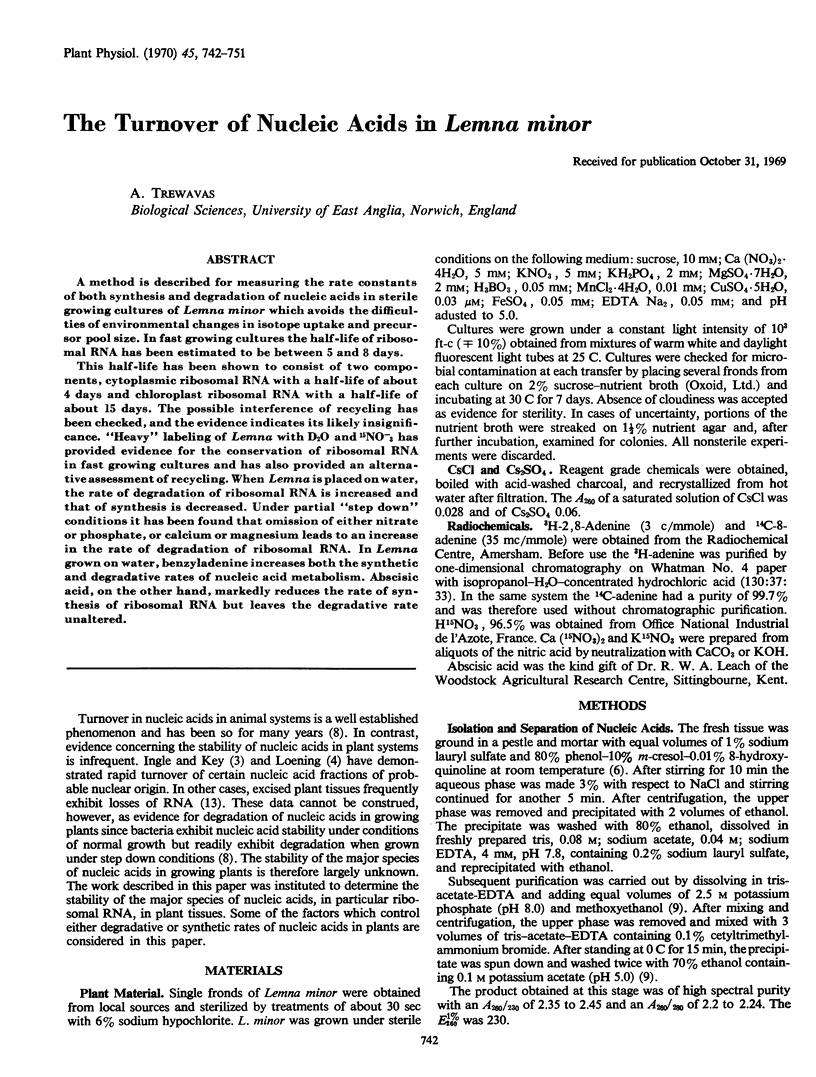
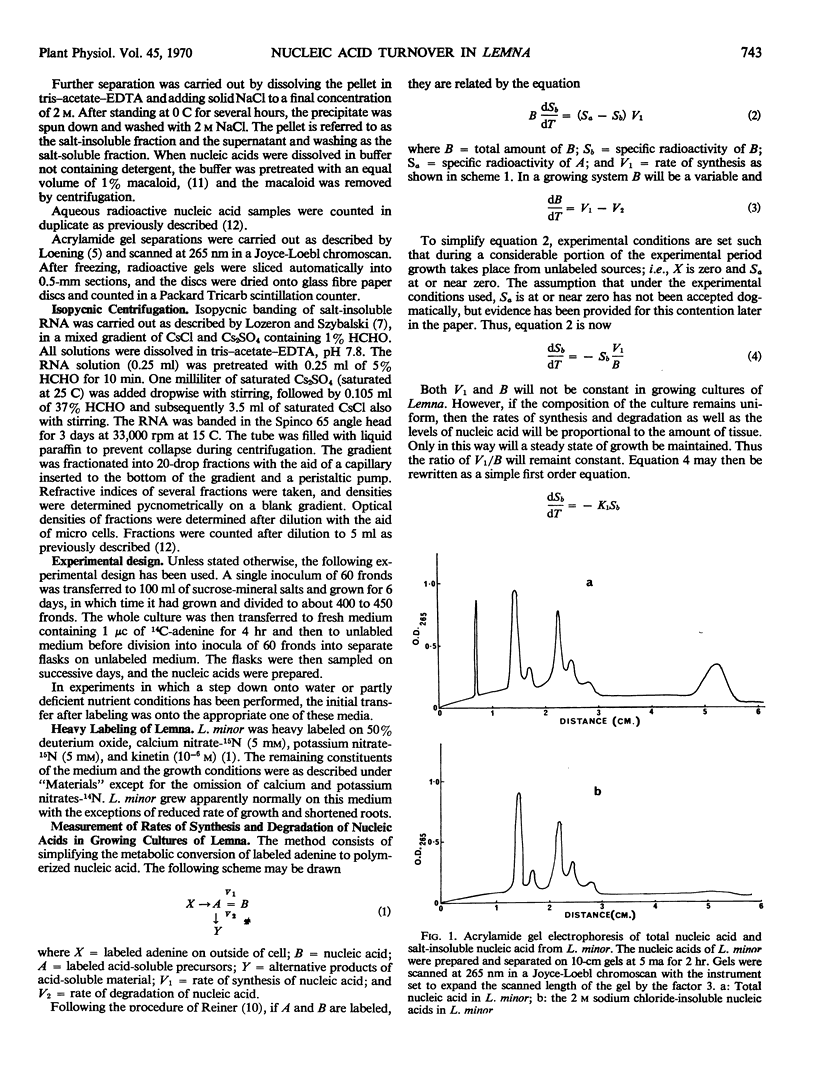
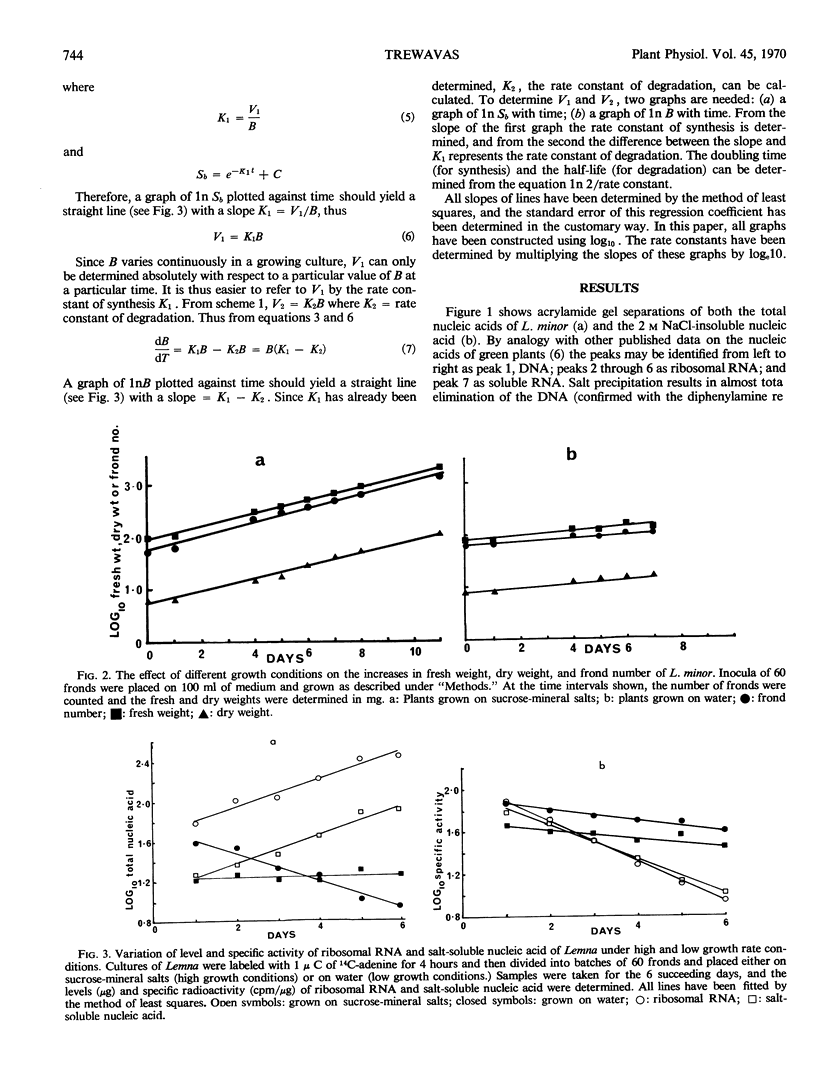
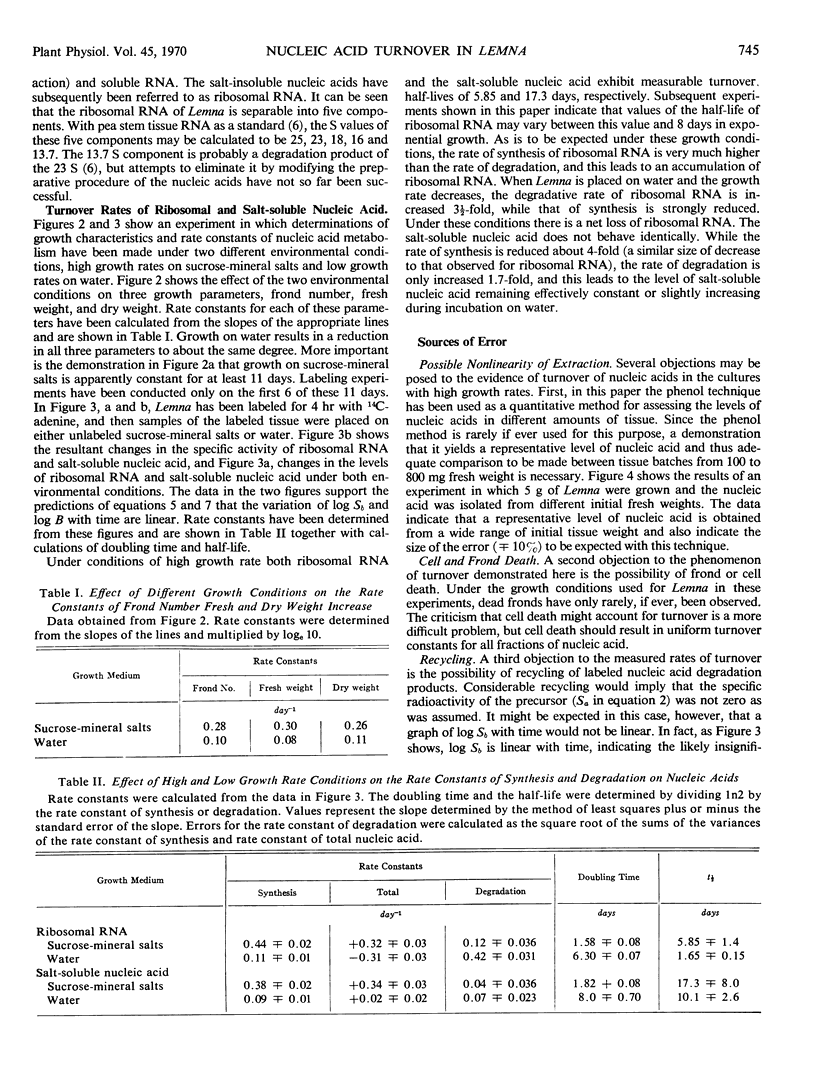
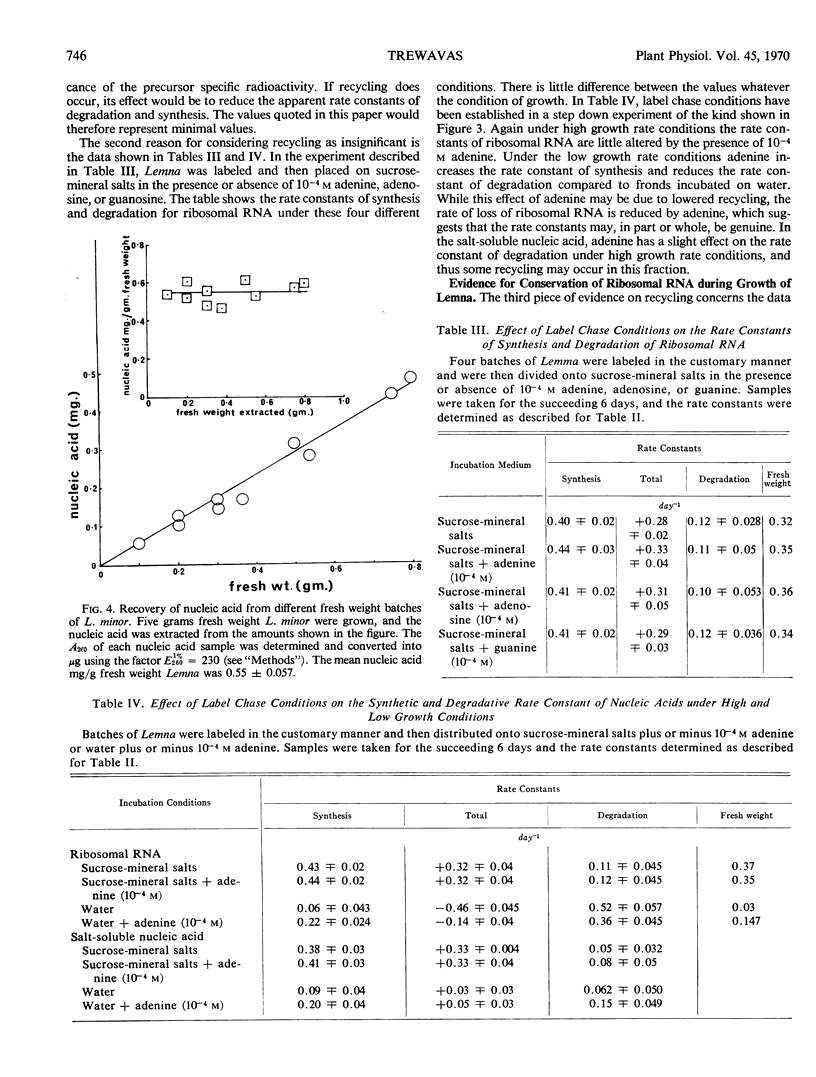
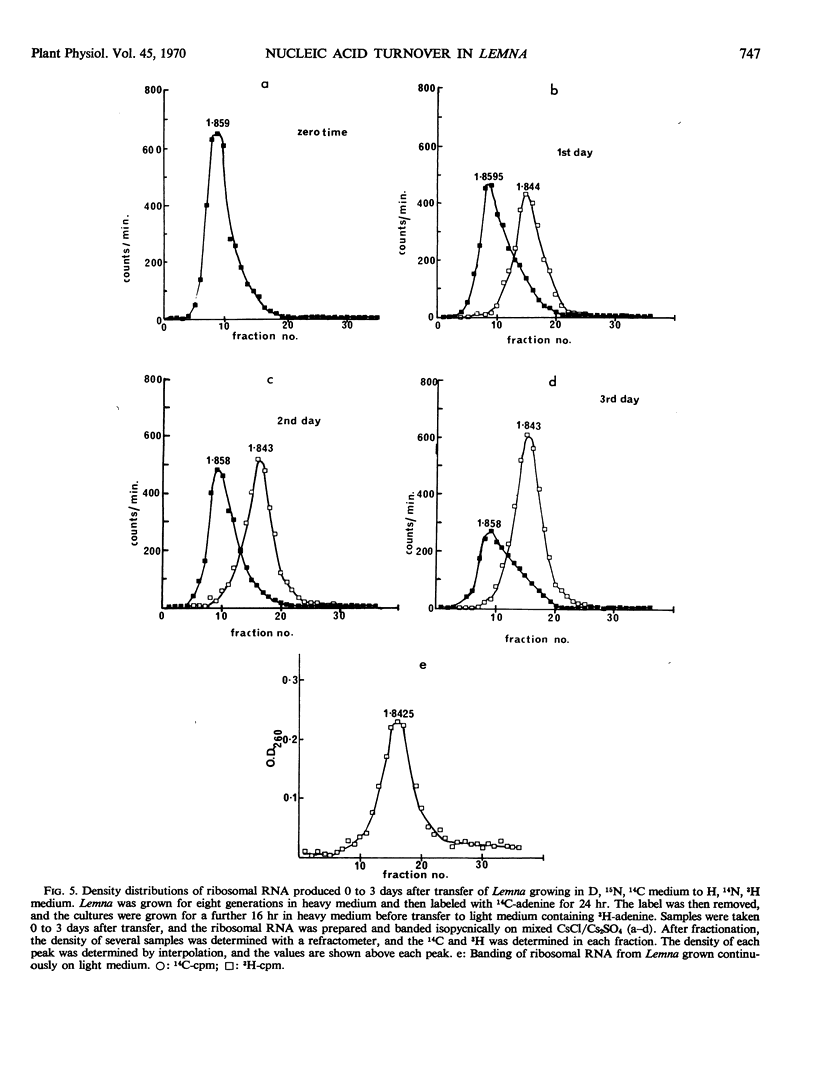
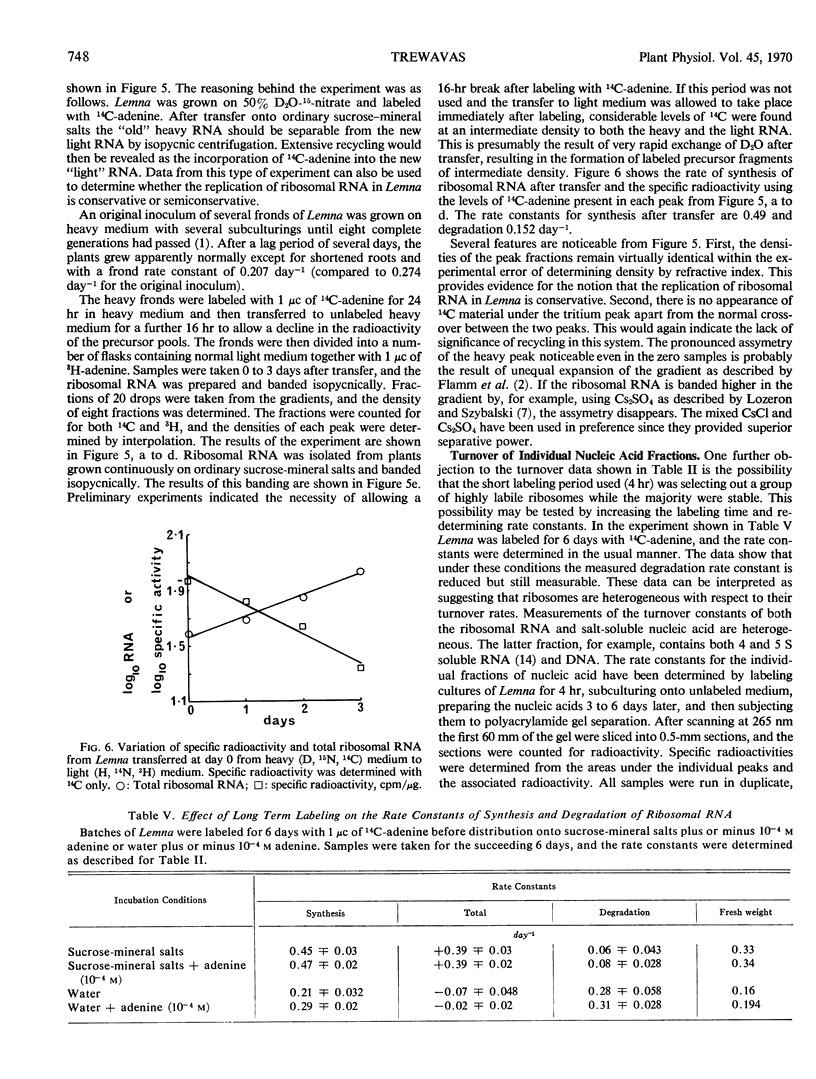
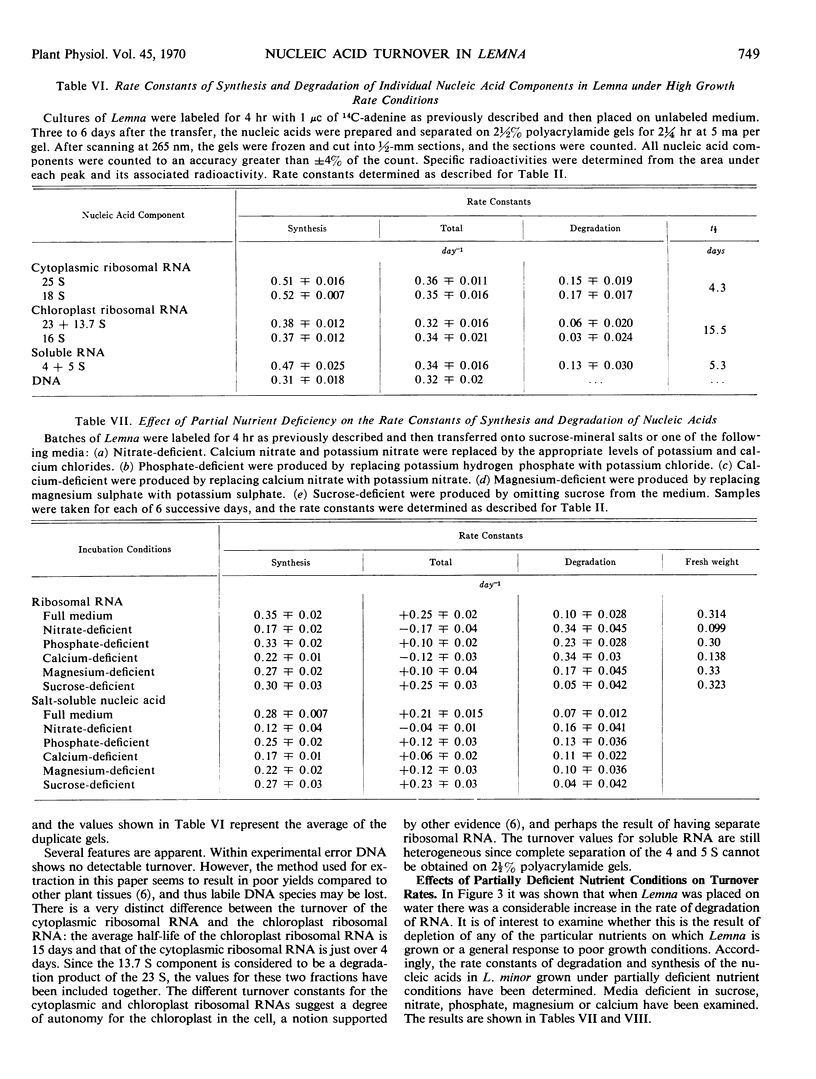
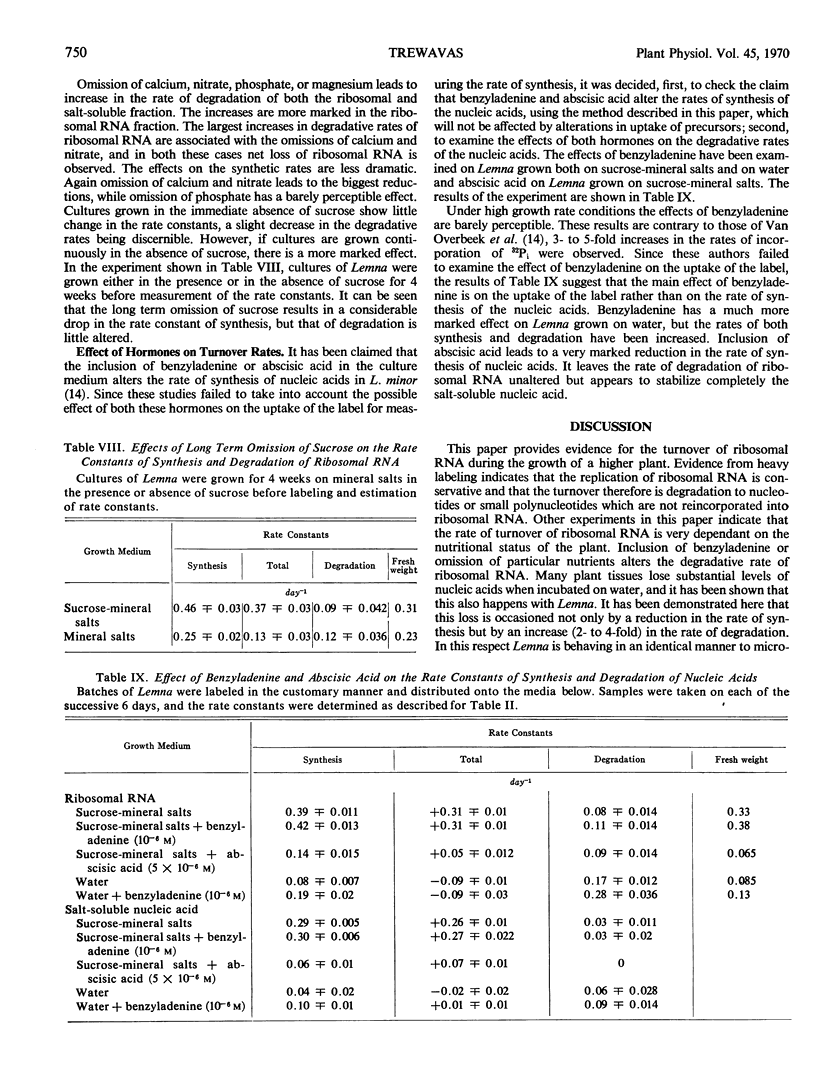
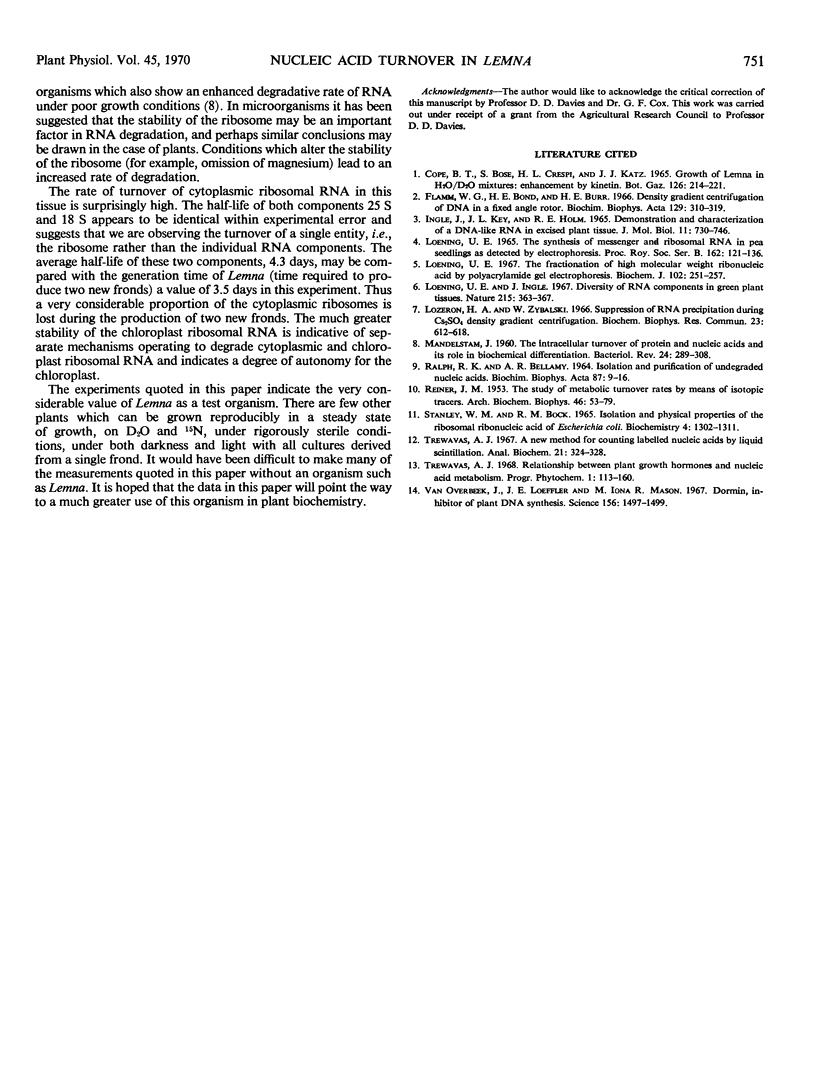
Selected References
These references are in PubMed. This may not be the complete list of references from this article.
- INGLE J., KEY J. L., HOLM R. E. DEMONSTRATION AND CHARACTERIZATION OF A DNA-LIKE RNA IN EXCISED PLANT TISSUE. J Mol Biol. 1965 Apr;11:730–746. doi: 10.1016/s0022-2836(65)80031-6. [DOI] [PubMed] [Google Scholar]
- LOENING U. E. THE SYNTHESIS OF MESSENGER AND RIBOSOMAL RNA IN PEA SEEDLINGS AS DETECTED BY ELECTROPHORESIS. Proc R Soc Lond B Biol Sci. 1965 Mar 16;162:121–136. doi: 10.1098/rspb.1965.0028. [DOI] [PubMed] [Google Scholar]
- Loening U. E., Ingle J. Diversity of RNA components in green plant tissues. Nature. 1967 Jul 22;215(5099):363–367. doi: 10.1038/215363a0. [DOI] [PubMed] [Google Scholar]
- Loening U. E. The fractionation of high-molecular-weight ribonucleic acid by polyacrylamide-gel electrophoresis. Biochem J. 1967 Jan;102(1):251–257. doi: 10.1042/bj1020251. [DOI] [PMC free article] [PubMed] [Google Scholar]
- Lozeron H. A., Szybalski W. Suppression of RNA precipitation during Cs2SO4 density gradient centrifugation. Biochem Biophys Res Commun. 1966 Jun 13;23(5):612–618. doi: 10.1016/0006-291x(66)90443-8. [DOI] [PubMed] [Google Scholar]
- MANDELSTAM J. The intracellular turnover of protein and nucleic acids and its role in biochemical differentiation. Bacteriol Rev. 1960 Sep;24(3):289–308. doi: 10.1128/br.24.3.289-308.1960. [DOI] [PMC free article] [PubMed] [Google Scholar]
- RALPH R. K., BELLAMY A. R. ISOLATION AND PURIFICATION OF UNDEGRADED RIBONUCLEIC ACIDS. Biochim Biophys Acta. 1964 May 18;87:9–16. doi: 10.1016/0926-6550(64)90041-6. [DOI] [PubMed] [Google Scholar]
- Stanley W. M., Jr, Bock R. M. Isolation and physical properties of the ribosomal ribonucleic acid of Escherichia coli. Biochemistry. 1965 Jul;4(7):1302–1311. doi: 10.1021/bi00883a014. [DOI] [PubMed] [Google Scholar]
- Trewavas A. A new method for counting labeled nucleic acids by liquid scintillation. Anal Biochem. 1967 Nov;21(2):324–329. doi: 10.1016/0003-2697(67)90198-4. [DOI] [PubMed] [Google Scholar]
- Van Overbeek J., Loeffler J. E., Mason M. I. Dormin (Abscisin II), inhibitor of plant DNA synthesis? Science. 1967 Jun 16;156(3781):1497–1499. doi: 10.1126/science.156.3781.1497. [DOI] [PubMed] [Google Scholar]


